The Portuguese town everyone’s talking about
The seaside hub of Melides on the Alentejo coastline has been creating a global buzz – for good reason.
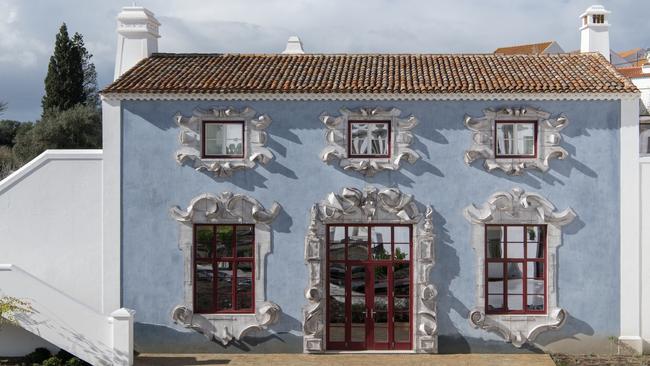
The seaside hub of Melides on the Alentejo coastline has been creating a global buzz – for good reason.
1. A well-heeled destination
Just 130km south of the Portuguese capital, Lisbon, Melides sits pretty on a swoop of Alentejo coastline, with the dramatic waves of the Atlantic on one side and rolling vineyards, cork farms and rice fields on the other. Unlike its popular neighbour Comporta, to the north, Melides retains a charmingly sleepy vibe, despite the fact some of the country’s most exciting tourism ventures are creating global buzz here. Perhaps the most buzzworthy of all is French fashionista Christian Louboutin’s hospitality debut. Louboutin first purchased land in Alentejo more than a decade ago, and was always at a loss when it came to quality places to dine, so he built a restaurant himself. He collaborated with chef David Abreau to craft the menu of Portuguese favourites at Xtian: porco a alentejana (pork with clams), octopus salad, fried red mullet with squid and rice, bacalhau (cod stew). Around the space, Louboutin crafted a design-driven hotel known as Vermelho (“red”, in Portuguese) in a style that unites maximalism and eclecticism. Many of the shoe maestro’s personal pieces adorn the property, from Spanish bargueno chests to an embroidered velvet sofa designed by Henri Samuel. Red, naturally, is everywhere, but there are also inky blue azulejos; the walls of one suite features an ocean-hued fresco by Louboutin’s long-time friend, Greek artist Konstantin Kakanias; and the exterior dazzles with enormous baroque ceramic appliques by Italian sculptor Giuseppe Ducrot.
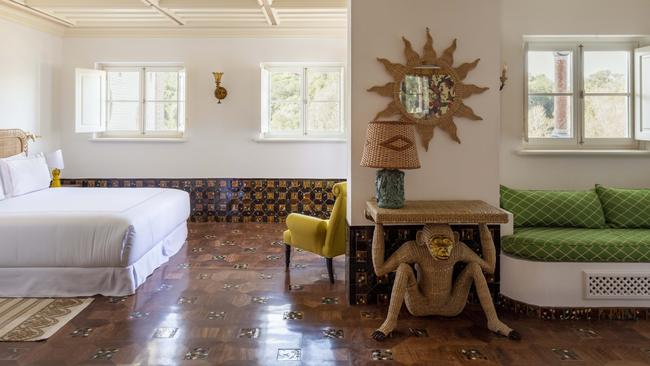
2. Explore and eat
One of the allures of Melides is that it’s small. You can walk around the entire town centre in less than 30 minutes but there are plenty of reasons to linger. Admire the pretty white and blue houses with wrought-iron balconies, the traditional whitewashed church, and the covered market where farmers and fishermen sell whatever’s in season. It’s a great place to visit if you’re self-catering; the sardines and oysters in this part of Portugal are particularly tasty. Alternatively, grab a table at the delightfully quirky O Melidense restaurant, designed – inside and out – with whimsical objects and featuring a menu of typical cuisine from the Alentejo region (try the migas de porco preto, a dish made with leftover bread and famed black Iberian pork).

3. Creative insights
Melides Art, an ambitious project conceived by Portuguese entrepreneur Miguel Macedo Basto de Carvalho, is part gallery, part studio and part hotel. An avid art collector, Carvalho’s “creative community” is a place where visiting painters, sculptors, curators, writers, musicians and designers can find inspiration and interact with like-minded souls. They’re housed in residences that are striking works in their own right, set amid a 270ha pine forest decorated with pieces from Carvalho’s collection, including anthropomorphic marble sculptures by Swiss artist Olaf Breuning, a life-size circus bear by American Marnie Weber, and Robert Melee’s Colourful Monsters, which resemble enormous melting candles. Visitors can tour the works during a monthly open day, or check into the design-driven bungalows.
READ MORE:Europe’s best restaurants | The tourism cachet of former capitals | The latest travel trends | Would you pay more for an adults-only flight? | Camilla Franks’ Amalfi secrets
4. One for the birds
Designated a protected area of national interest, the Melides Lagoon stretches from the town centre all the way to the beach, through pine forests, meadows and rice fields. Twitchers will want to bring their binoculars, as sandpipers, hoopoe and the common stonechat are among the dozens of species that come here to feed. Glimpse them from the bird observatory at the heart of the lagoon. A serene way to explore the waterway is with the team from Surf in Comporta, which has an outlet on the banks and offers stand-up paddleboard lessons and yoga, as well as kayak and SUP rentals.
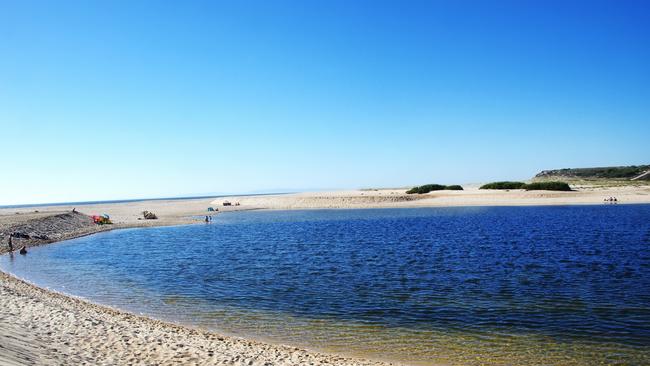
5. Sample fine wines
It’s a short drive to the family-owned Herdade do Cebolal, currently managed by fourth and fifth-generation vintners, mother-and-son duo Isabel and Luis. Drop in to the cellar to sample the minimal-intervention wines, which are packaged using recycled materials, Alentejo cork and estate beeswax. Luis will whip up a platter of regional snacks such as housemade chorizo and fresh goat’s cheese. Depending on the time of year, you can participate in wine-blending sessions and festivities to celebrate the grape and chestnut harvest.
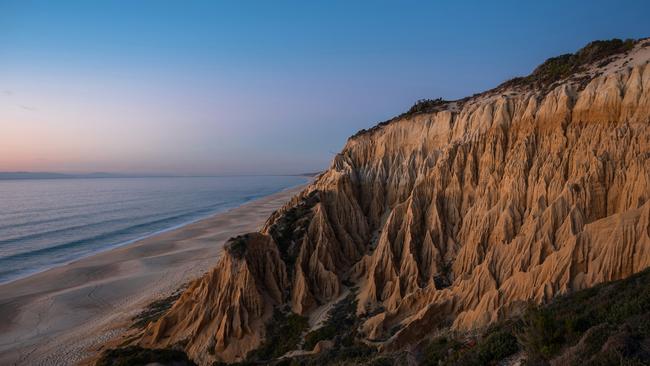
6. Head to the beach
An ethereal coastal landscape that appears to cleave off the edge of the Earth awaits at Arriba Fossil da Gale, a staggering swath of fossilised sand cliffs, impossibly striated and easily the setting for a Hollywood moon landing. Visit at sunset for a fiesta of fiery colours. The end of the day also dazzles at Praia de Melides, a long stretch of beach sandwiched between the lagoon and the Atlantic. When it’s time to refuel, pull up a chair at Lagoa o Mar and order a spritz and prawn skewers to enjoy with your toes in the sand. On the other side of the lagoon you’ll find Praia da Vigia, a ribbon of powder at the base of steep cliffs. Come for the calm conditions and linger while watching paragliders swoop from high up, at the top of the escarpment.
7. Get taken for a ride
Vet Luis Lamas has a stable of 25 horses available for trail rides through his company Passeios a Cavalo, offering a glorious way to discover the wild landscapes of the Alentejo. Opt for trots on the beach or in the hills of the Serra de Grandola, your steed crushing aromatic wild herbs under hoof. Being amid nature is thirsty work, so it’s a good thing Luis is friends with a number of local vintners. After your ride he’ll guide you to a winery where you can toast your good fortune with a chilled glass of something delicious.
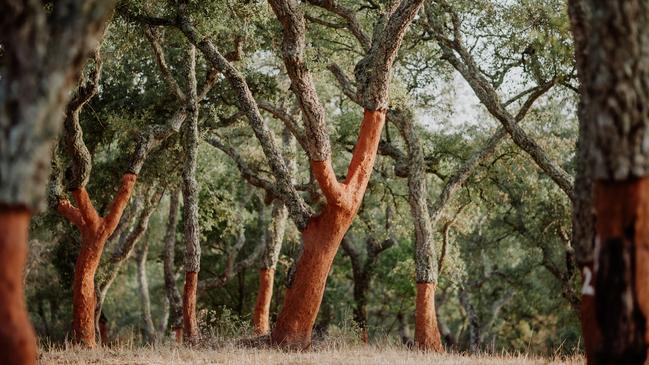
8. All the fun of the fair
If you want to taste Alentejo but are strapped for time, be sure to visit Melides on the third weekend of November. The fair comes to town each year, bringing with it stallkeepers showcasing traditional handicrafts – woven blankets, wicker baskets, hand-carved chairs – as well as tasty regional snacks. Try pao Alentejano, a delicious, long-fermented bread made with a natural yeast starter; Alcomonias, a lozenge-shaped sweet uniting toasted wheat flour, honey and pine nuts; and pinhao pear-and-pine-nut candy. The wine flows, the music is loud and spirits are high.
9. Cook up a storm
Antonio Leitao and Marta Fernandes are passionate foodies, and they’re just as passionate about where their food comes from. Join one of their cooking classes and you’ll visit an organic farm to pick and choose vegetables and fruits that will be used in your lunch. With your assistance, chef Antoinio turns your foraged bounty into a gourmet feast – think trout cured in beetroot juice on split red lentil crackers and lime creme – which you then enjoy in the sunshine on a picnic rug with generous pours of Portuguese wine. If you’re planning a day out, Antonio and Marta can also put together a packed lunch to eat on the road (or the beach).
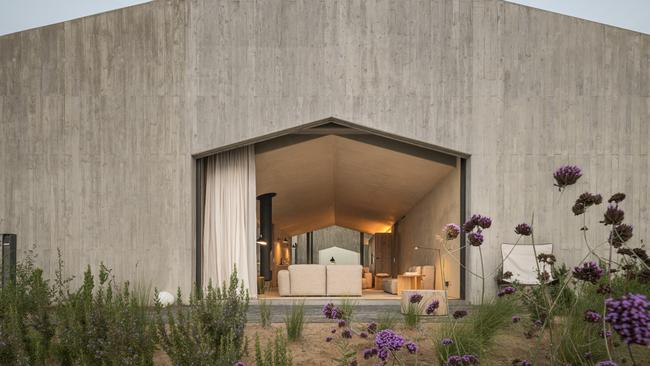
10. The place to stay
Enjoying a more rural setting is Melides’ other new hotel, Pa.te.os, a play on the word “patio”. The property encompasses luxury villas, an emerging un-rushed winery, a nascent farm-to-table restaurant, and a resort (complete with angled infinity pool). The brainchild of visionary developers Miguel and Sofia Charters in partnership with architect Manuel Aires Mateus, it exudes authenticity. Look anywhere, and you’ll find only natural, solid materials in earthen hues woven with detail-oriented luxury. Each of the four villas is different in design. But one commonality is the 10sq m-plus glass doors, opened via electric motor on the rare occasion the vast countryside views don’t provide sufficient grounding to the land when closed. When retracted, you have the full force of the landscaped grounds, all fragrant Mediterranean flora, cork oaks, olive and pine trees, and arbutus.

To join the conversation, please log in. Don't have an account? Register
Join the conversation, you are commenting as Logout